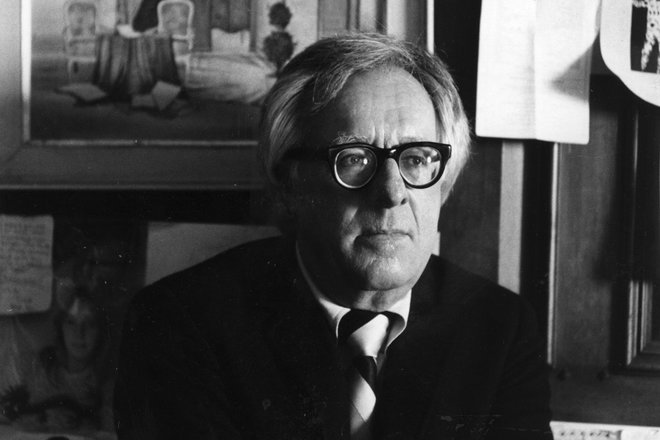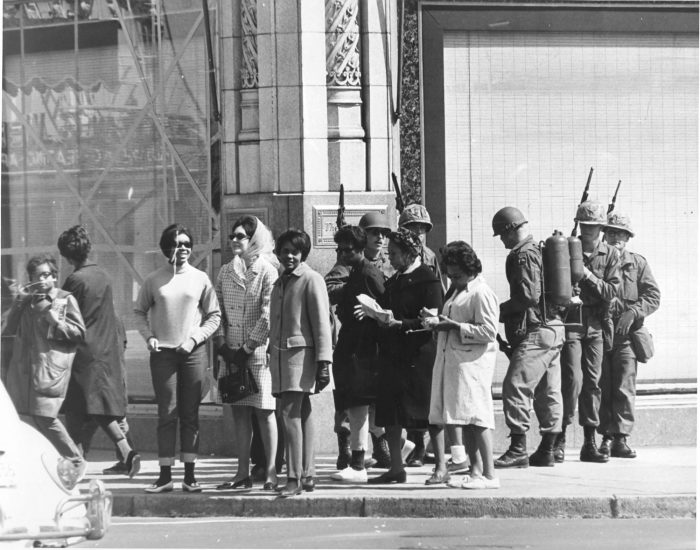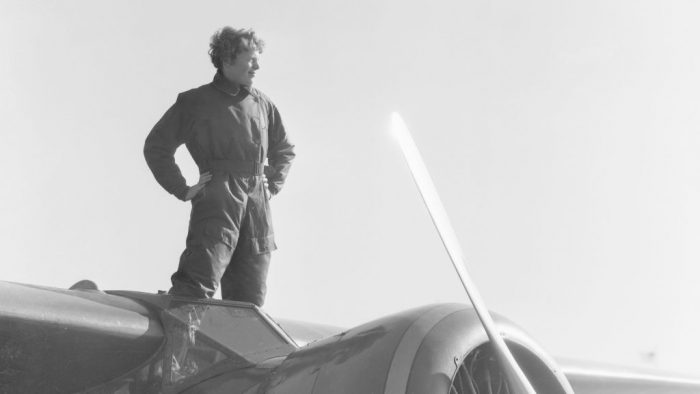Instead, he’ll have his face buried in a computer screen, conducting important research about one of the sun’s most fascinating features. Read more from Steve Annear for The Boston Globe.
New tools help blind students in Colorado Springs experience eclipse
Colorado Springs Gazette, August 21
Even with low vision and a sensitivity to light that prevented him from looking to the sky on Monday, 15-year-old Jack Lambert still considered Monday’s solar eclipse a “once-in-a-lifetime” opportunity.
Lambert was one of more than 200 elementary- to high school-level students at the Colorado School for the Blind who witnessed the historic event through activities involving touch and sound.
Using tablets and smartphones, the sightless downloaded an “Eclipse Soundscapes” application, designed by organizations including NASA and the Smithsonian Institution. Read more from Rachel Riley for the Colorado Springs Gazette.
What’s best weapon for battling species invading California waters? Data
The Sun, August 20

For Smithsonian marine biologists, pulling a plate from the water and seeing the different diverse fouling community is always a nice surprise, according to Katy Newcomer. Each is tagged property of Smithsonian Research Center. (Photo by Cindy Yamanaka/Orange County Register)
There’s an invasion plaguing the coastal waters of Southern California.
Waves of tiny interlopers spark havoc at fisheries, clog municipal water pipes and frustrate boaters who mus dislodge buckets of sea crud.
They’ve altered our coastal regions’ ecosystems, endangered native fish and birthed such nast problems as “swimmer’s itch.” Read more from Rachel Uranga for The Sun.
Spectacular rebirth of Belize’s coral reefs threatened by tourism and development
The Guardian, August 22
Just below the surface of the turquoise sea, coral flutters majestically amid schools of puffed up porcupinefish and fluorescent blue and yellow angelfish.
The gangly staghorn and fanning elkhorn corals are thriving in swimming distance of Laughing Bird Caye, a tiny Caribbean sandy islet in southern Belize, thanks to a restoration project that is yielding striking results.
More than 90,000 corals grown in sea nurseries have been planted in shallow reefs, increasing coral cover in these southern warm waters by 35%. Marine creatures are reproducing, and about 90% have survived natural and manmade pressures for almost a decade. Read more from Nina Lakhani for The Guardian.
On Ray Bradbury’s Birthday, Revisit His Rejected Planetarium Script
Space.com, August 22

The late author Ray Bradbury, who would have been 97 years old on Aug. 22, 2017, captivated readers with his science fiction — but his 1981 planetarium script left museum officials unmoved. Credit: Evening Standard/Getty
Today (Aug. 22) would have been author Ray Bradbury’s 97th birthday. Bradbury, who died in 2012, is acclaimed worldwide for his literary science fiction, but fewer people know about one of his science writing projects that never panned out: a forgotten planetarium-show script for the Smithsonian’s National Air and Space Museum (NASM) in Washington, D.C.
Bradbury was working on the NASM project — eventually titled “The Ghosts of Forever: The Great Shout of the Universe!” — in 1980, writer and editor David Romanowski explained in a NASM blog post published online June 2012. Romanowski was a staff writer for Abrams Planetarium at Michigan State University (MSU) in 1980; he found out about the NASM script when he corresponded with Bradbury in the fall of that year about penning a show for the MSU planetarium, Romanowski reported. Read more from Mindy Weisberger for Space.com
Why Amelia Earhart Still Matters
In 1920, a Kansas woman took her first flight—and soon changed the world.
Popular Mechanics, August 23
High above the Pacific Ocean in her gleaming two-engine Lockheed Electra, Amelia Earhart soared. It was July 2, 1937, and along with navigator Fred Noonan, she was on her way to their next stop—Howland Island, 1,700 miles southwest of Honolulu. The two veteran flyers were on the last legs of their around-the-world trip, having already completed 20,000 miles in six weeks.
But all was not right.
As the plane flew over a desolate portion of the Pacific, it became increasingly clear that they were in danger. The plane was too heavy, they were short on fuel, and the tiny island was always going to be difficult to locate—a two-and-half-square-mile spit of land in a big ocean. As the hours ticked by and the morning sun obscured her view, Earhart’s voice rose in panic and confusion as she sent several clipped radio transmissions. Then, as far as the official record shows, silence. That silence would be the quiet beginning of one of the greatest mysteries in American history. Read more from Matt Blitz for Popular Mechanics.
Behind the Scenes of the President’s Committee on the Arts and the Humanities Resignation
KCET, August 22

President’s Committee delegation arriving in Cuba with Joshua Bell playing with Cuban students. The trip was one month after President Obama’s historic trip to Havana. It resulted in the first government to government collaborations between Cuba and the US. | Courtesy of the President’s Committee on the Arts and the Humanities
When the President’s Committee on the Arts and the Humanities issued its letter of resignation on August 18 in response to the President’s reaction to the violence in Charlottesville, it was the final move in a long chess game to protect and advance the arts under a changing administration.
The 17-member committee, including six from the Los Angeles area, was the last of the original 35 Obama appointees. Many committee members resigned immediately after the election. The actress Alfre Woodard did so after the inauguration.
“Art knows no politics, no borders. But I could not converse with an attitude antithetical to its very existence,” she said, articulating a concern shared by many former members. Read more from Lauren Herstik for KCET.
How The Washington Wizards Saved The National Portrait Gallery
WAMU Radio, August 23

National Guard troops with pedestrians outside the Hecht’s Store in the wake of rioting, April 6, 1968.
The Washington Post / Courtesy DC Public Library, Star Collection
Downtown D.C. was burning on April 5, 1968.
As rioting and looting swept through the city after the assassination of Reverend Martin Luther King, Jr., Beverly Cox, a young staffer at the National Portrait Gallery, sat eating lunch with her colleagues at an Italian restaurant downtown.
“The waiter came rushing up to us and he said, ‘We’ll serve you right away, but I know you have to get out of here because it’s really getting dangerous out there.’ And we looked at him like, ‘What are you talking about?’”
When Cox and her coworkers left the restaurant, they saw people running down F Street Northwest, fleeing intensifying violence. The group rushed back to the gallery, which was still being finished and hadn’t yet opened to the public. Read more and listen to the story by Ally Schweitzer for WAMU.
Sting and J. Ralph To Be Honored At The Smithsonian For Their Contributions to American Music
Billboard, August 25

Sting arrives at the 2016 American Music Awards at Microsoft Theater on Nov. 20, 2016 in Los Angeles. (Daniel Torok/Patrick McMullan via Getty Images)
Sting and composer J. Ralph are headed to the Smithsonian.
On Sept. 8, the Smithsonian’s National Museum of American History will acquire donations from both artists for their contributions to American music, including their Oscar-nominated song, “The Empty Chair,” from the documentary Jim: The James Foley Story about the American photojournalist who was captured and killed in Syria. Read more from Melinda Newman for Billboard.








